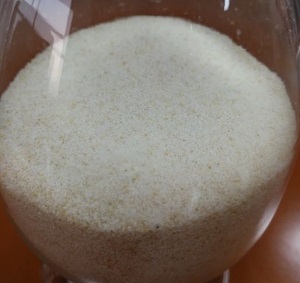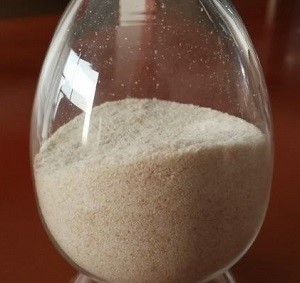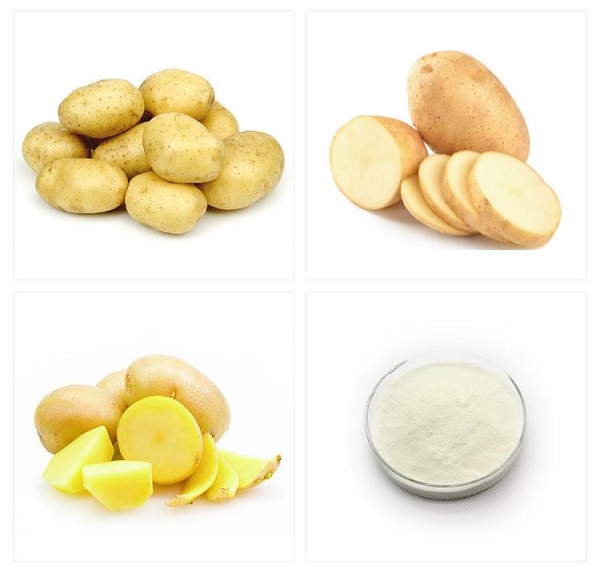Bulk Potato Protein Powder: The Overlooked Nutritional Goldmine
2024-01-30 14:46:40
A potato, consisting of over 75% water, contains approximately 25% dry matter, which we commonly refer to as solids. Among these solids, the primary component is starch, accounting for around 17% of the potato's total weight, followed by potato protein powder at roughly 2.3%, and trace amounts of reducing sugars and pectin, totaling about 0.5%. Consequently, in the processing of potato starch, the emphasis has traditionally been on starch extraction, while proteins, reducing sugars, pectin, and other substances are typically discharged along with industrial wastewater.
Nourishment specialists feature the high healthy benefit of potato protein powder, which is wealthy in fundamental amino acids like lysine, methionine, threonine, and tryptophan. Regardless of the generally unobtrusive protein content in potato tubers, their importance as a staple food overall and a wellspring of top-notch protein highlights the significance of exploring potato protein according to a dietary point of view.


In recent years, with the tightening of environmental regulations, many potato starch processing enterprises in China have been upgrading their processes and equipment to maximize the utilization of potatoes. Removing protein from process water has turned into a critical part of profound handling. Globally, the extraction of potato protein has acquired huge consideration, with advanced procedures and innovations. Companies like Elkana in the Netherlands and Kuras in Northern Europe have conducted studies on protein content in potato starch varieties, including Désirée and Bintje, which are popular among Europeans. Their research categorizes soluble proteins from potato tubers into three types: patatin proteins, proteinase inhibitors, and other proteins.
Liu Gang, an expert in the comprehensive utilization of by-products in the national potato industry, outlines three primary methods for potato protein extraction:
●Acid-Thermal Coagulation Method:
Some large potato starch factories in the Netherlands and Germany have implemented protein recovery from the wastewater of starch processing to offset a portion of the wastewater treatment costs. The methods they employ include pre-concentration using reverse osmosis membranes, followed by thermal coagulation and finally separating and drying the coagulated proteins.
The specific method for protein recovery from potato starch processing wastewater using the acid-thermal coagulation process involves adjusting the pH of the wastewater to 3.5-5.5, heating it to over 90°C, causing protein denaturation and coagulation. The coagulated proteins are then separated from the water using centrifugation and dried into protein powder. The acid-thermal coagulation method used by most potato starch factories yields protein purity of over 80%, ash content between 1.5% and 3.0%, and a relatively light color.
However, proteins obtained through acid-thermal coagulation have poor solubility, and low water, and oil absorption capacity, and have lost many functional properties necessary for food applications, such as foaming and foam stability. As a result, their use in the food industry is limited. Despite the high nutritional value of potato protein, its poor solubility means that concentrated potato protein remains a low-value byproduct of starch processing. Potato protein prepared using the acid-thermal coagulation method is primarily used as animal feed, traditionally for cattle and pigs, and there have been attempts to replace fish meal as a feed for fish.

●Expanded Bed Adsorption Chromatography:
Expanded bed adsorption chromatography is a rather ideal method for recovering naturally active proteins from potato starch processing wastewater. The recovered proteins not only retain their biological activity but can also be separated and recovered with distinct properties for patatin protein and protease inhibitors using various adsorption media and elution conditions.
Expanded bed adsorption chromatography consolidates particle separation, clarification, and concentration into a single step, making it more suitable for industrial production compared to classical packed bed chromatography.
●Other Methods:
Another method for recovering proteins involves using polymeric electrolyte coagulation and low-temperature concentration to separate proteins from potato starch processing juice water. Polymers utilized in this cycle incorporate WF-1-Rokryzol (non-ionic polyacrylamide coagulant, atomic weight 3×10^3), WF-2-Rokryzol (anionic high sub-atomic weight polyacrylamide corrosive), and their subordinates, as well as CMC-methyl carboxymethyl cellulose.

All in all, while the speculations and strategies behind potato protein powder handling might be complex, the blossoming utilization of potato protein in food and drug ventures is obvious. The capability of potato protein is huge, reaching out past just a result of natural strategies. All things considered, it ought to be embraced as a functioning road of investigation.
For related products, please visit our website:www.sxytorganic.com
Contact Us For More Details>>
E-mail:sales@sxytorganic.com
Tel: +86-029-86478251
_1737093401309.png)
